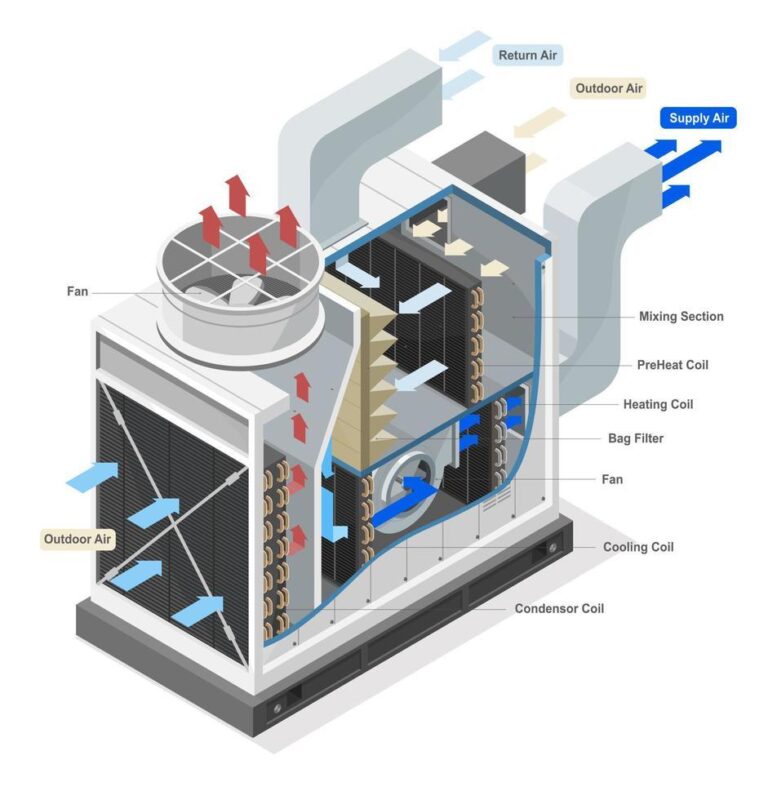Houston homeowners know the challenge all too well: scorching summers that push air conditioners to their limits, followed by unpredictable winters that demand reliable heating. When your HVAC system serves double dutykeeping you cool in July and warm in Januaryany breakdown feels twice as urgent. The reality is that most modern homes rely on integrated heating and air conditioning systems that share components, and when one fails, it often affects the other. Understanding how these dual systems work and recognizing the warning signs of trouble can save you from uncomfortable nights and expensive emergency repairs.
At 75 Degree AC, we’ve spent years diagnosing and repairing dual HVAC systems across the Houston area. From furnaces that won’t ignite to air handlers that struggle with both heating and cooling modes, we’ve seen how interconnected problems can cascade through your entire system. This guide breaks down everything you need to know about heating and air conditioning repair, so you can make informed decisions and keep your home comfortable year-round.
Understanding Dual Heating and Air Conditioning Systems
Most residential HVAC systems in Houston operate as dual-function units, meaning they handle both heating and cooling through shared infrastructure. Unlike separate, standalone systems, these integrated solutions use common components like the air handler, ductwork, thermostat, and blower motor to distribute conditioned air throughout your home.
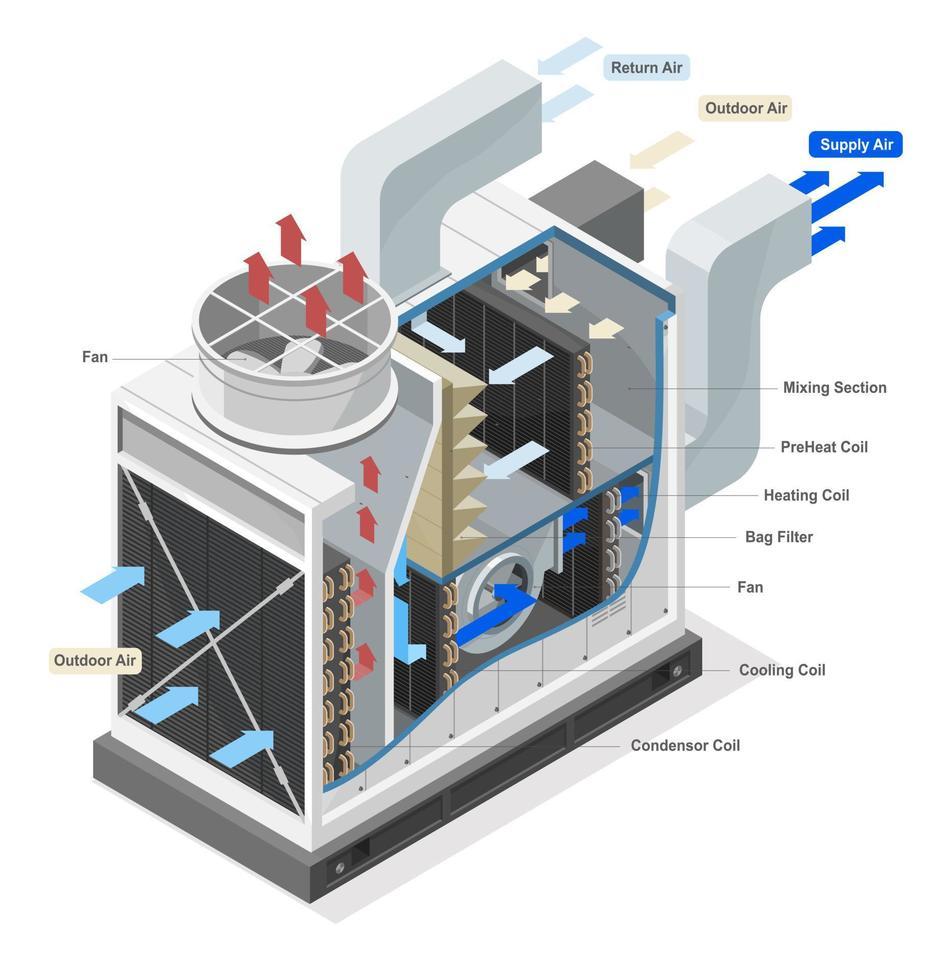
How Dual Systems Work
Your typical dual system consists of an outdoor condensing unit for cooling, an indoor furnace or heat pump for warming, and a shared air handler that circulates air through your ductwork. When you adjust your thermostat, it signals the appropriate system to activate while the blower motor pushes air through the same network of ducts. This integration creates efficiency but also means that a malfunction in one component can affect the entire system’s performance.
According to the Department of Energy, HVAC systems account for approximately 48% of home energy use, making them the largest energy expense for most households. When these systems malfunction, the impact extends beyond comfortit hits your utility bills directly.
Common System Configurations
- Gas Furnace with Central AC: The most common setup in Houston, combining natural gas heating with electric air conditioning
- Heat Pump Systems: All-electric solutions that provide both heating and cooling by reversing refrigerant flow
- Dual Fuel Systems: Hybrid configurations that switch between electric heat pumps and gas furnaces based on outdoor temperature
- Package Units: Self-contained systems where heating and cooling components sit together in a single cabinet
Recognizing Common Problems in Dual HVAC Systems
Because heating and air conditioning systems share critical components, problems often present themselves in unexpected ways. A homeowner might notice weak cooling in summer, only to discover the root cause involves a blower motor that will also fail during heating season. Recognizing these interconnected issues early prevents minor problems from becoming major failures.
Shared Component Failures
The blower motor, capacitor, and air handler serve both heating and cooling functions. When these components wear out, both systems suffer. A failing blower motor might produce weak airflow regardless of whether you’re heating or cooling. Similarly, a damaged air handler cabinet can develop leaks that reduce efficiency in both modes.
Thermostat and Control Issues
Modern programmable and smart thermostats control both heating and cooling cycles. When the thermostat malfunctions or loses calibration, it might fail to switch between heating and cooling modes properly. Homeowners often report rooms that won’t reach the set temperature or systems that cycle on and off too frequentlyproblems that affect comfort in every season.
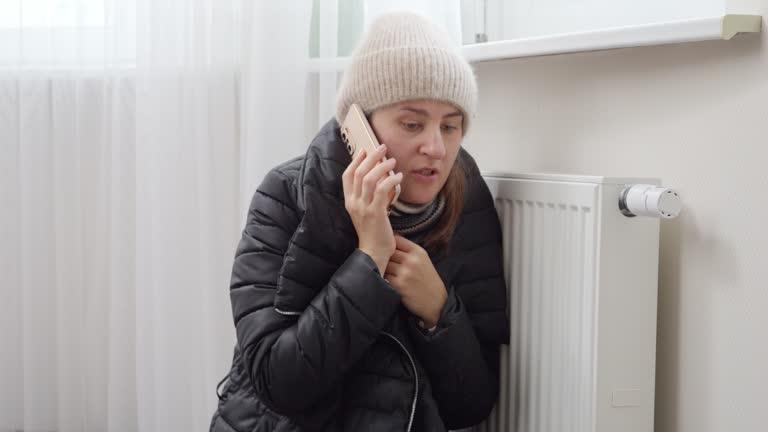
Ductwork Problems That Affect Both Systems
Leaky or poorly insulated ductwork reduces efficiency whether you’re heating or cooling your home. The EPA estimates that 20-30% of air moving through duct systems is lost due to leaks, holes, and poorly connected ducts. This means your furnace and air conditioner both work harder than necessary, driving up energy costs and accelerating wear on components.
Seasonal Crossover Issues
Some problems only reveal themselves when switching between heating and cooling. A reversing valve in a heat pump might fail to change direction, or a furnace that sat dormant all summer might have developed a cracked heat exchanger. These seasonal transitions often expose weaknesses that went unnoticed during months of single-mode operation.
| Symptom | Possible Cause | Affects Heating? | Affects Cooling? |
|---|---|---|---|
| Weak airflow from vents | Blower motor failure or clogged filter | Yes | Yes |
| System won’t switch modes | Thermostat or control board issue | Yes | Yes |
| Uneven temperatures in rooms | Ductwork leaks or damper problems | Yes | Yes |
| Strange noises when starting | Worn bearings or loose components | Possibly | Possibly |
| High energy bills | System inefficiency or refrigerant leak | Yes | Yes |
Making the Repair vs. Replace Decision
One of the most common questions we hear from Houston homeowners involves whether to repair an aging dual system or invest in complete replacement. The answer depends on multiple factors including system age, repair costs, and long-term efficiency goals.
The 50% Rule
HVAC professionals often reference the 50% rule: if a repair costs more than 50% of a new system’s price and your equipment is past its midpoint lifespan, replacement usually makes more financial sense. For example, if your 12-year-old furnace needs a $2,000 heat exchanger replacement, but a new high-efficiency system costs $4,500, replacement delivers better long-term value.
Age and Efficiency Considerations
Most HVAC systems last 15-20 years with proper maintenance. Systems older than 10-12 years often operate at significantly lower efficiency than modern equipment. Today’s high-efficiency furnaces achieve 95-98% AFUE ratings compared to 60-70% for older models, while modern air conditioners reach SEER ratings of 16-20 versus 10-12 for equipment from the early 2000s.
Frequency of Repairs
If you’re calling for repairs twice a year or more, your system is sending a clear message. Frequent breakdowns indicate that multiple components are reaching end-of-life, and continuing to patch individual problems becomes more expensive than systematic replacement. We recommend tracking repair costs over a two-year periodif they exceed $1,500 total, consider replacement options.
The Professional Repair Process for Dual Systems
Proper diagnosis and repair of integrated heating and air conditioning systems requires systematic evaluation of all components, not just the part showing obvious symptoms. Here’s what professional HVAC repair looks like when performed correctly.
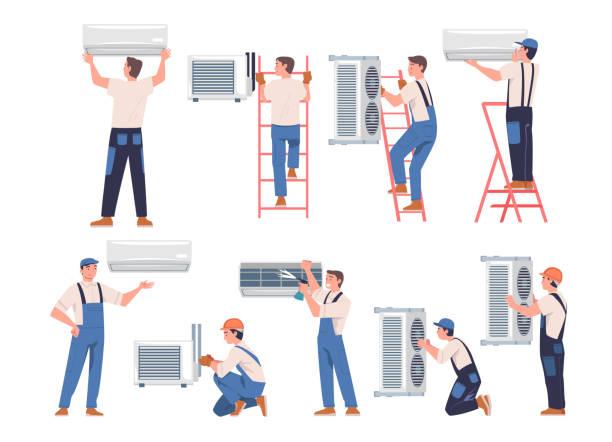
Comprehensive System Diagnosis
A qualified technician begins with a complete system evaluation, testing both heating and cooling functions even if only one seems problematic. This includes checking thermostat calibration, measuring airflow at multiple vents, inspecting electrical connections, testing capacitors and contactors, and evaluating refrigerant levels. For furnaces, technicians perform combustion analysis and heat exchanger inspection to ensure safe operation.
Component Testing and Measurement
Modern diagnostic tools allow technicians to measure precise system performance. Digital multimeters check voltage and amperage draw, manometers measure gas pressure and airflow, and infrared thermometers identify temperature differentials that indicate problems. These measurements provide objective data that guides repair decisions rather than guesswork.
Repair Implementation
Once diagnosis is complete, repairs follow manufacturer specifications and industry best practices. This might involve replacing worn blower motors, repairing refrigerant leaks and recharging the system, cleaning or replacing heat exchangers, recalibrating thermostats, or sealing ductwork. Professional technicians carry common parts on their service vehicles, enabling same-day repairs for many issues.
Post-Repair Testing
After completing repairs, thorough testing ensures the entire system operates correctly in both heating and cooling modes. Technicians verify proper temperature rise or drop, confirm adequate airflow, check for unusual sounds or vibrations, and test safety controls. This verification prevents callbacks and ensures you get reliable performance.
Understanding Repair Costs and Pricing Factors
Heating and air conditioning repair costs vary significantly based on problem complexity, parts required, and system accessibility. Understanding these factors helps you evaluate quotes and avoid overpaying for services.
Typical Repair Cost Ranges
- Thermostat replacement: $150-$500 depending on model and features
- Blower motor replacement: $400-$800 including labor
- Capacitor replacement: $120-$300 for quick fixes
- Heat exchanger repair: $1,500-$3,000 for major furnace work
- Refrigerant leak repair and recharge: $400-$1,200 depending on leak location
- Control board replacement: $300-$700 for electronic components
- Ductwork sealing and repair: $300-$1,000 depending on extent
What Affects Pricing
Several factors influence the final cost of repairs. System accessibility mattersequipment in cramped attics or crawl spaces takes longer to service. Part availability affects pricing, especially for older systems requiring obsolete components. The time of year also plays a role, with emergency repairs during peak summer or winter typically costing more than scheduled service during mild weather. Finally, some repairs require permits or must meet updated code requirements, adding to the total expense.
Value of Detailed Quotes
Reputable HVAC companies provide itemized quotes that break down parts and labor costs separately. This transparency allows you to understand exactly what you’re paying for and compare quotes accurately. Be wary of vague estimates or companies unwilling to explain their pricing. At 75 Degree AC, we believe in straightforward pricing with no hidden feesyou know the cost before we begin work.
Preventive Maintenance: The Key to Fewer Repairs
Most heating and air conditioning repairs are preventable through regular maintenance. Industry data shows that properly maintained systems experience 95% fewer breakdowns than neglected equipment while operating 20-30% more efficiently.
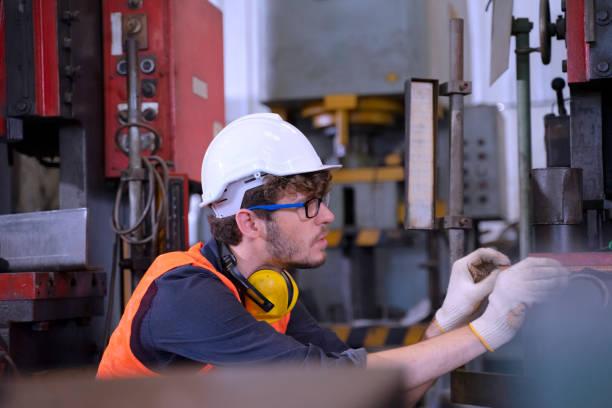
Essential Maintenance Tasks
Both heating and cooling systems benefit from biannual professional serviceonce before cooling season begins and again before heating season starts. During these visits, technicians clean coils and burners, replace filters, lubricate moving parts, tighten electrical connections, test safety controls, and verify proper refrigerant and gas pressure levels. This preventive work catches small problems before they cause system failures.
What Homeowners Can Do
Between professional visits, homeowners should change air filters every 1-3 months depending on usage and filter type, keep outdoor units clear of debris and vegetation, ensure supply and return vents remain unobstructed, and monitor system performance for unusual sounds or smells. These simple steps extend equipment life and maintain efficiency.
Maintenance Plan Benefits
Many HVAC companies, including 75 Degree AC, offer preventive maintenance plans that bundle regular service at discounted rates. These plans typically include priority scheduling, reduced repair costs, and extended warranties. The upfront cost pays for itself through improved efficiency and fewer emergency repairs. According to ACCA (Air Conditioning Contractors of America), every dollar spent on preventive maintenance saves $4 in future repair costs.
Why Professional Service Matters for Dual Systems
Modern HVAC systems involve complex interactions between mechanical, electrical, and refrigeration components. Attempting DIY repairs or hiring unlicensed technicians often creates more problems than it solves.
Licensing and Training Requirements
Professional HVAC technicians undergo extensive training and certification. They must understand refrigeration principles, electrical systems, combustion analysis, and building codes. In Texas, technicians need proper EPA certification to handle refrigerants legally. This specialized knowledge ensures repairs meet safety standards and manufacturer specifications.
Diagnostic Equipment and Tools
Proper diagnosis requires specialized equipment most homeowners don’t possess. Refrigerant gauges, combustion analyzers, digital manometers, and electrical testing tools represent thousands of dollars in professional-grade equipment. More importantly, technicians know how to interpret readings and identify root causes rather than treating symptoms.
Warranty Protection
Most manufacturer warranties require professional installation and service by licensed contractors. Attempting DIY repairs or using unlicensed technicians typically voids these warranties, leaving you responsible for full replacement costs if major components fail. Professional service maintains warranty coverage and often includes labor guarantees on repairs.
Safety Considerations
HVAC systems involve serious safety hazards including high voltage electricity, natural gas, carbon monoxide, and high-pressure refrigerants. Improper repairs can create fire hazards, gas leaks, or carbon monoxide poisoning. Licensed technicians follow strict safety protocols to protect your family and property.
Choosing the Right HVAC Repair Company in Houston
Not all HVAC companies deliver equal service quality. Selecting a reliable contractor for your heating and air conditioning repair needs requires evaluating several factors beyond price alone.

Essential Qualifications
Look for companies with proper licensing, insurance, and bonding. Verify technicians hold current EPA certifications and manufacturer training. Established companies with years of local experience understand regional climate challenges and building types. At 75 Degree AC, our technicians bring combined decades of experience servicing HVAC systems across the Greater Houston area.
Transparent Pricing and Communication
Quality companies provide detailed written estimates before starting work and explain problems in terms homeowners understand. They don’t pressure you into unnecessary replacements or use scare tactics. We believe in educating customers about their options and respecting their decision-making process.
Response Time and Availability
HVAC emergencies don’t follow business hours. Choose a company that offers 24/7 emergency service and can provide same-day service when your comfort is on the line. Quick response times prevent minor problems from causing extended discomfort and potential property damage.
Reviews and References
Online reviews provide insight into real customer experiences. Look for patterns in feedback about punctuality, professionalism, pricing accuracy, and follow-up service. Companies with consistently positive reviews demonstrate reliability. Don’t rely solely on testimonials from company websitescheck independent platforms like Google, Yelp, and Better Business Bureau.
When to Call for Emergency Service
Some heating and air conditioning problems require immediate professional attention. Recognizing true emergencies helps you respond appropriately and prevents dangerous situations.
Heating Emergencies
Call for emergency service immediately if you smell gas anywhere in your home, notice yellow or orange furnace flames instead of blue, see visible cracks or damage in the heat exchanger, or experience carbon monoxide detector alarms. These situations pose immediate safety risks. Also seek emergency help if your heating completely fails during freezing weather with vulnerable household members present.
Cooling Emergencies
While less immediately dangerous, cooling failures during extreme Houston heat can become medical emergencies, especially for elderly residents, infants, or those with health conditions. If indoor temperatures exceed 85-90°F and continue rising, or if you notice electrical burning smells or sparking from HVAC equipment, call for emergency service.
What Constitutes Non-Emergency Service
Most repairs can wait for standard business hours if the system still provides minimal function. Reduced efficiency, unusual but not dangerous sounds, or minor temperature inconsistencies warrant prompt attention but don’t require middle-of-the-night service calls. Schedule these repairs quickly to prevent escalation, but save emergency service fees for true urgent situations.
The 75 Degree AC Difference
At 75 Degree AC, we’ve built our reputation on delivering reliable heating and air conditioning repair services that Houston homeowners trust. Since 2016, we’ve focused on transparent pricing, prompt response, and repairs that last.
Our licensed technicians arrive with fully-stocked service vehicles, enabling same-day repairs for most common issues. We diagnose problems thoroughly rather than selling unnecessary services, and we back our work with solid guarantees. Whether you need routine AC maintenance, emergency furnace repair, or complete system replacement, our team provides solutions that fit your needs and budget.
We serve Houston and surrounding communities including Katy, Sugar Land, The Woodlands, Cypress, and Richmond with the same commitment to quality and honesty. Our straightforward approach means you understand exactly what’s wrong, what it costs to fix, and why the repair matters for your comfort and safety.
Key Takeaways for Houston Homeowners
Successful heating and air conditioning repair starts with understanding how integrated systems work and recognizing warning signs early. Regular maintenance prevents most emergency breakdowns while extending equipment life and maintaining efficiency. When repairs become necessary, choosing qualified professionals ensures work meets safety standards and delivers lasting results.
Remember these essential points: shared components mean problems affect both heating and cooling performance, age and repair frequency guide replacement decisions, professional diagnosis prevents wasted money on wrong repairs, transparent pricing and clear communication indicate reputable service providers, and preventive maintenance represents the best investment in system longevity.
Your home’s comfort depends on properly functioning HVAC systems year-round. By addressing problems promptly, maintaining equipment consistently, and partnering with trustworthy professionals, you ensure reliable heating and cooling regardless of Houston’s weather extremes.
Schedule Your Heating and Air Conditioning Repair Today
Don’t wait until a minor problem becomes a major emergency. Whether your system shows early warning signs or has stopped working completely, 75 Degree AC provides the expert repair service Houston homeowners depend on. Our experienced technicians diagnose problems accurately, repair them properly, and get your comfort back on track.
Call us at (713) 598-2737 to schedule service or request a free estimate. We offer same-day service, transparent pricing, and repairs backed by our commitment to quality. Let us show you why thousands of Houston residents trust 75 Degree AC for all their heating and air conditioning needs.
Frequently Asked Questions
How often should I have my heating and air conditioning system serviced?
Professional maintenance twice per year delivers optimal resultsonce in spring before cooling season and once in fall before heating season. This biannual schedule catches problems early and maintains peak efficiency. If you use your system heavily or have older equipment, more frequent service may benefit you.
Can I repair my HVAC system myself to save money?
Homeowners can handle simple tasks like replacing air filters and keeping outdoor units clear, but actual repairs require professional expertise. HVAC systems involve electrical hazards, refrigerants requiring EPA-certified handling, and components where improper service creates safety risks. DIY repairs also typically void manufacturer warranties, potentially costing more in the long run.
Why does my system work fine in cooling but fails when heating?
This usually indicates a problem specific to the heating components rather than shared parts. Common causes include ignition system failures, pilot light issues, cracked heat exchangers, or reversing valve problems in heat pumps. Seasonal failures often reveal problems that developed during months of non-use, making pre-season maintenance valuable.
How long do HVAC repairs typically take?
Simple repairs like capacitor or thermostat replacement take 1-2 hours. More complex issues involving blower motors, heat exchangers, or refrigerant leaks may require 3-6 hours or multiple visits for parts ordering. Emergency service companies like 75 Degree AC carry common parts on service vehicles, enabling same-day completion for most repairs.
What’s the average lifespan of a dual heating and cooling system?
With proper maintenance, expect 15-20 years from furnaces and 15-18 years from central air conditioning units. Heat pumps typically last 12-15 years due to year-round usage. Lifespan varies based on usage intensity, maintenance quality, installation correctness, and climate conditions. Houston’s heat and humidity can reduce lifespan if systems aren’t maintained properly.
Will repairing one part fix both heating and cooling problems?
If the problem involves a shared component like the blower motor, air handler, thermostat, or ductwork, one repair often resolves both issues. However, if separate systems have independent problems, each requires its own repair. Professional diagnosis determines whether you’re dealing with one problem affecting both functions or multiple separate issues.
Do I need permits for HVAC repairs in Houston?
Most repairs don’t require permits, but major work like ductwork modifications, equipment replacement, or electrical panel changes typically do. Licensed contractors handle permit requirements as part of their service. Permits ensure work meets current building and safety codes, protecting your investment and ensuring inspections verify proper installation.
How can I tell if my HVAC company is giving me an honest diagnosis?
Request a detailed explanation of the problem including what’s failing and why. Ask to see the failed part if replaced. Get a second opinion on expensive repairs or replacement recommendations. Trustworthy companies welcome questions, provide written estimates, and never pressure immediate decisions. They explain problems clearly and offer options rather than pushing the most expensive solution.

